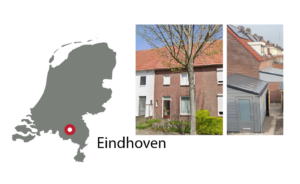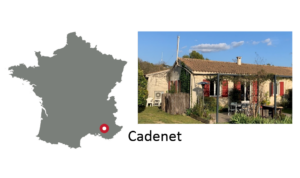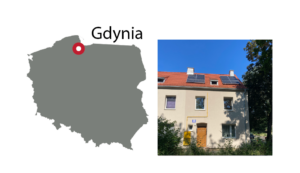A prototype of the new HEAT-INSYDE heat battery will be demonstrated in three European countries with different climates
Eindhoven, Netherlands
The demo site in Eindhoven is a social house owned by HEAT-INSYDE partner Trudo. The building was constructed in 1948 and renovated in 2022. The HEAT-INSYDE system for this house consists of the heat battery combined with a heat pump and heat panels in a so-called heat shed located in the garden of the house. The storage system provides the house with domestic hot water and space heating.
The heat shed containing the HEAT-INSYDE heat battery, heat pump and heat panels was delivered to the backyard of the house in December 2022 and the full installation of the system is now complete. The heat battery is now connected to the heating system of the house via underground tubing and the heat battery is ready to be turned on for testing over the next weeks.
Cadenet, France
The demo site in France is a private house constructed in 1984 and located in Cadenet, where our HEAT-INSYDE partner CEA is the main point of contact and oversees the preparation of the site to host the heat battery. As for the demo site in Poland, the HEAT-INSYDE system for this house will consist of the heat battery combined with an air-water heat pump and photovoltaic panels. The storage system will provide the house with domestic hot water and space heating.
The house is currently ready to host the heat battery that is expected to be delivered to Cadenet in late summer. The heat battery will be installed in the basement of the house, where difficult access and the presence of the house’s hydraulic system connection present a challenge that is being duly considered in the installation planning. The space heating in the house will be provided by hot air blowing, for which our partner VMI has developed and installed in the house an innovative system that includes dedicated filters for particle pollution.
Gdynia, Poland
The demo site in Poland is a social house in Gdynia, owned by the city of Gdynia and provided for testing in the HEAT-INSYDE project by our partner Fasada. The building was constructed in 1943 and renovated in 2016. The HEAT-INSYDE system for this house will consist of the heat battery combined with an air-water heat pump and photovoltaic panels. The storage system will provide the house with domestic hot water.
At the beginning of 2023 the photovoltaic panels were installed on the roof of the house, while the installation of the heat pump and plumbing work are currently under way to prepare the house to host the heat battery in the coming months. Some of the challenges encountered in the preparation of this demo site to host the heat battery included the need to insulate the building envelope, internal additional electrical work to fit the required power connectivity between the heat battery and the building and the limited space availability of 4 m2 for all elements of the storage system including the heat battery and the buffer tanks.


